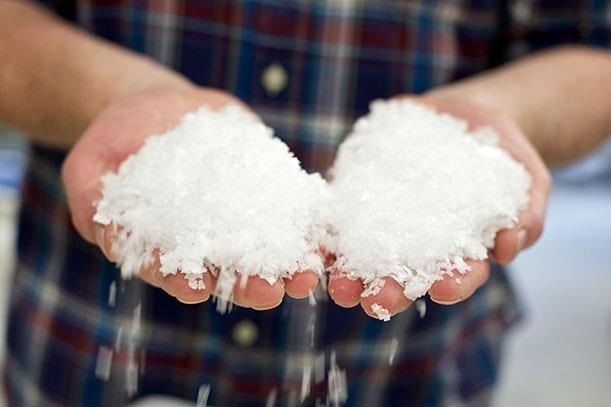Gourmets and big-time chefs like Thomas Keller rave about fleur de sel. Fleur de sel appears in fancy eateries and cookbooks world-wide, and in the early 2000s, I was not at all surprised to see diners in a high-end restaurant sprinkle a pinch of it on their plates.
However, is this an ingredient that will make a significant difference for home cooks? I think so.
Flavor de sel is one of those small but indispensable touches, like olive oil or fresh herbs, that can transform an ordinary meal into a culinary experience. Although you may not want to use it every single day, there are some dishes that will be markedly improved when you do.
Fleur de Sel: When & Why Would You Use It?
Fleur de sel is not meant for seasoning a dish while it is cooking due to its delicate nature and higher price relative to other salts. You will lose its unique character if you expose it to high temperatures.
Fleur de sel should be sprinkled on anything that needs a little extra oomph right before it is consumed: salads, fish, meat, fruit, vegetables, and desserts. Some people even sprinkle it over their oatmeal (guilty).
Flor de Sel earns an “A” in Chemistry
In general, the more minerals and moisture in a salt, the less refined it is. Fleur de sel is the salt with the most complex flavor by definition. Due to its trace amounts of calcium and magnesium chlorides, it is also regarded as among the saltiest of salts (perhaps to no one’s surprise). They absorb moisture, pre-dissolving the minerals in the salt and instantly delivering flavor to the taste buds.
It’s No Wonder Fleur De Sel Is Said To Taste Like The Ocean.
Also, chemistry might explain the salty-sweet craze that has put fleur de sel on the map. In addition to adding flavor to ingredients like caramel and chocolate, salt also triggers a chemical reaction in our bodies.
Glucose, an important energy source, can be detected by sugar sensors in our mouths. Our sweet-sensitive taste cells have an intestinal glucose sensor, which is triggered by sodium. This alerts the taste cell to register sweetness.
Fleur De Sel: What Makes It Special?
As with coffee beans or wine grapes, the quality of fleur de sel depends on nuance (e.g., natural environment, production). Harold McGee describes salt beds as being treated in the same way as agricultural crops, which are managed, harvested, and processed.
The fleur de sel variety of sea salt is commonly associated with the northern Atlantic coast of France (also known as Brittany). Its name, literally “flower of salt,” reflects its reputation as the best and most delicate salt; some varieties cost up to 200 times the price of table salt.
Crops live in soil; sea water is fleur de sel. Fresh water from the Atlantic Ocean is channeled into shallow marshes, where it evaporates and floats to the surface as a fine layer after a period of evaporation. A rake is used to gently collect the salt since the crystals are so fragile. It was historically only women who were allowed to collect fleur de sel due to their correspondingly “delicate” behaviors.





